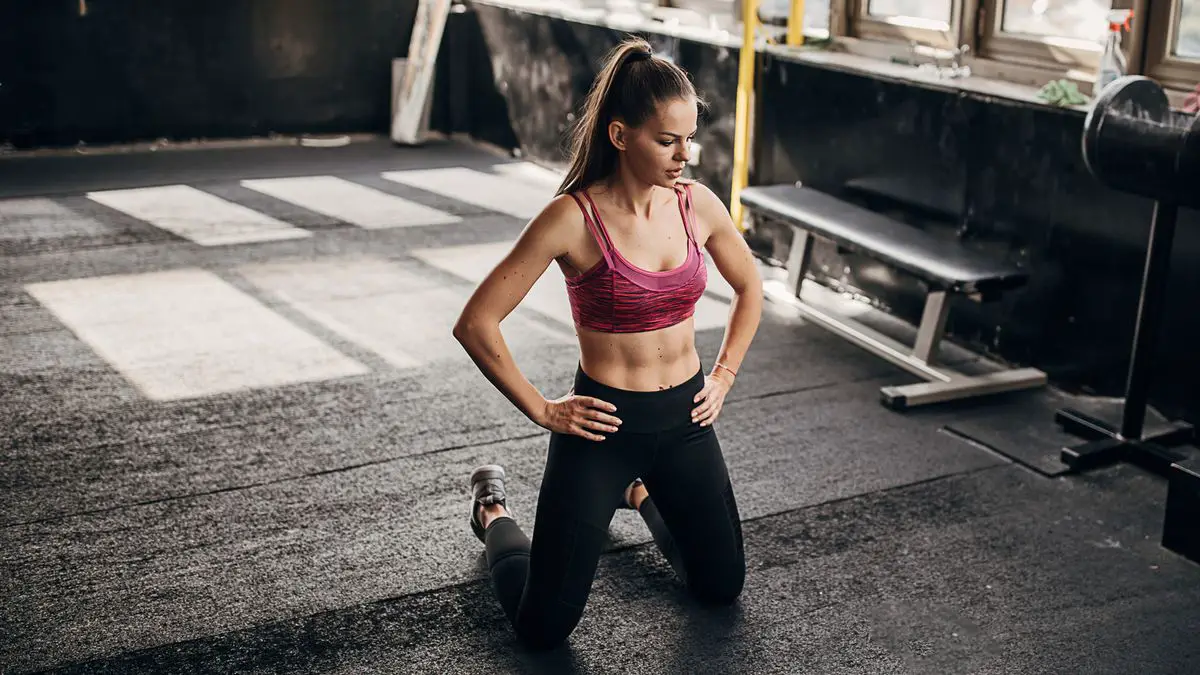
- Past studies show that getting enough physical activity can help lower a person’s risk for major adverse cardiovascular events (MACE).
- Researchers from the University of Sydney have found that just 1.5 to 4 minute small bursts of high intensity exercise throughout the day may lower a person’s MACE risk.
- This correlation was observed more significantly in female participants compared to male participants.
“Physical inactivity is a major public health issue contributing to
“There is a pressing need to identify feasible ways and support people to be physically active. Structured exercise such as gyms, running, classes, etc is fantastic towards these goals but only 20% of the middle aged and older population do it regularly,” he pointed out.
Stamatakis is the lead and corresponding author of a new study recently published in the British Journal of Sports Medicine that has found that just 1.5 to 4 minute small bursts of high intensity exercise throughout the day — scientifically known as vigorous intermittent lifestyle physical activity (VILPA) — such taking the stairs instead of an elevator or carrying groceries a short distance may help lower a person’s risk of MACE, especially in women.
For this study, researchers analyzed UK Biobank data from more than 103,000 middle-aged men and women with an average age of 61. All participants had worn an activity tracker 24 hours a day for a full week between 2013 and 2015.
About 22,000 participants said they did not follow any structured exercise program or only took one recreational walk a week, while the remaining participants said they regularly exercised.
Researchers used the activity trackers to determine which participants had bouts of VILPA during the day and for how long.
“Incidental physical activity, things we do as part of our daily routines, offers many untapped opportunities, but we do not understand what is the best way to promote, and how to support people — VILPA offers such an option,” Stamatakis explained.
“These are short bursts of vigorous incidental activity, typically lasting [between] 10 seconds [and] 1 minute, that are part of people’s daily living. This kind of activity may be more feasible than structured exercise for many people as it does not require preparations, time commitment, or traveling to a facility to be active,” he detailed.
“Using advanced wearable measurement methods that allow us to scrutinize the effects of daily movement at a very high resolution — 10-second time windows — we wanted to understand what are the effects of VILPA on major cardiovascular disease events,” added Stamatakis. “No such study has been published before.”
Study participants’ cardiovascular health was tracked until November 2022.
Upon analysis, researchers found that female participants with no formal exercise regimen who recorded an average of 3.4 minutes of VILPA a day were 51% less likely to have a heart attack, 67% decreased risk for heart failure, and 45% less likely to develop any type of MACE compared to female participants who did not clock any VILPA during their day.
Additionally, scientists discovered for women that even VILPA amounts of 1.2 to 1.6 minutes a day were associated with a 40% decreased risk of heart failure, 33% lowered risk of heart attack, and 30% lower risk of all MACE.
“This finding is significant for at least two reasons,” Stamatakis said. “First, it represents a much lower amount of physical activity [than] any current exercise related recommendation, and this activity is incidental — which implies that it may be easier for many people to incorporate it into their daily routine.
“The second noteworthy aspect of these findings is that we should not be fooled into thinking that small amounts of VILPA are a quick fix of a complex problem, like physical inactivity,” he continued.
“The beneficial associations we observed were in women who committed to short bursts of VILPA almost daily, several times each day — nine to 10 bursts on average. Turning such behavior into habit is not necessarily easy. Our results show that even a little bit of higher intensity activity can help and might be just the thing to help people develop a regular physical activity, or even exercise, habit in the long term. In most occasions people who are unaccustomed to vigorous exertion will need support to develop such a habit.”
– Emmanuel Stamatakis, PhD
When looking at male participants, those who averaged 5.6 minutes of VILPA each day with no formal exercise had a 16% reduced risk of having any type of MACE than those who did not clock any VILPA. However, scientists did not find any correlation between VILPA and separate types of MACE.
“It is hard to speculate why we observed this, our study was not specifically designed to understand mechanisms,” Stamatakis said.
“However, there is a good possibility that because men’s relative VILPA intensity was only 70% versus 83% for women — around 20% higher — [meaning that] women exerted themselves more during VILPA bouts, and as a result we could see a markedly lower cardiovascular disease risk in women, in the long term.”
“We are now examining the associations of incidental physical activities of any intensity, light, moderate, as well as vigorous, and heart disease risk,” he added. “We are particularly interested in understanding what is the ‘heart health value’ of each minute of moderate and light intensity activities against each minute of vigorous (activity).”
After reviewing this study, Cheng-Han Chen, MD, a board-certified interventional cardiologist and medical director of the Structural Heart Program at MemorialCare Saddleback Medical Center in Laguna Hills, CA, told MNT that it is very promising to see such dramatic improvements in cardiovascular disease-related mortality with seemingly small amounts of vigorous exercise — something that could conceivably be accomplished by most people.
“Cardiovascular disease still remains the major cause of morbidity mortality in the world, so any intervention we can do to help lower that disease profile will have a great impact on the country’s health,” Chen continued.
“So we specifically promote lifestyle interventions that people can do on their own to improve people’s heart disease risk as preventive medicine, rather than waiting for the disease to progress and for us to have to intervene, either through medicines or through procedures,” he told us.
MNT also spoke with Rigved Tadwalkar, MD, a board-certified consultative cardiologist and medical director of the Cardiac Rehabilitation Center at Providence Saint John’s Health Center in Santa Monica, CA, about this study.
“My initial reaction to this study is one of optimism,” Tadwalkar commented. “The findings suggest that even minimal amounts of VILPA can significantly reduce the risk of MACE in women who typically do not engage in structured exercise. This is especially encouraging for patients who find it challenging to adhere to traditional exercise regimens due to time constraints, physical limitations, or other barriers.”
“The study highlights the potential of incorporating brief, intense physical activities into daily routines as an alternative to more conventional exercise programs, offering a practical and accessible strategy for improving cardiovascular health,” he continued. “The gender-specific results also underscore the importance of tailoring exercise recommendations to individual needs, which could lead to more personalized and effective prevention and treatment plans.”
For those looking to increase their daily VILPA, Chen said there are different types of activities people can incorporate throughout their day for brief periods of time.
“The easiest would be to use your environment to your advantage,” he detailed. “For instance, if there are stairs in your home or in your workplace, then we’re talking about just taking 1 to 2 minute brisk walks up and down the stairs just a few times a day would accomplish what the study has shown. This study also mentioned that just vigorous day-to-day, lifestyle activities such as carrying heavy groceries could also provide the same heart health benefit.”
Tadwalkar advised setting reminders to move every hour can prompt these brief but intense activities,
“Many smartwatches and wearable devices already provide this capability,” he continued. “For those working from home or in an office setting, consider using a standing desk and/or periodically performing quick exercises — some effective options include jumping jacks and squats.”
“The key is to find opportunities to increase the heart rate in short intervals throughout the day, making physical activity both manageable and effective,” Tadwalkar added. “These strategies not only help to reduce cardiovascular risk but can also improve overall energy and general well-being.”





